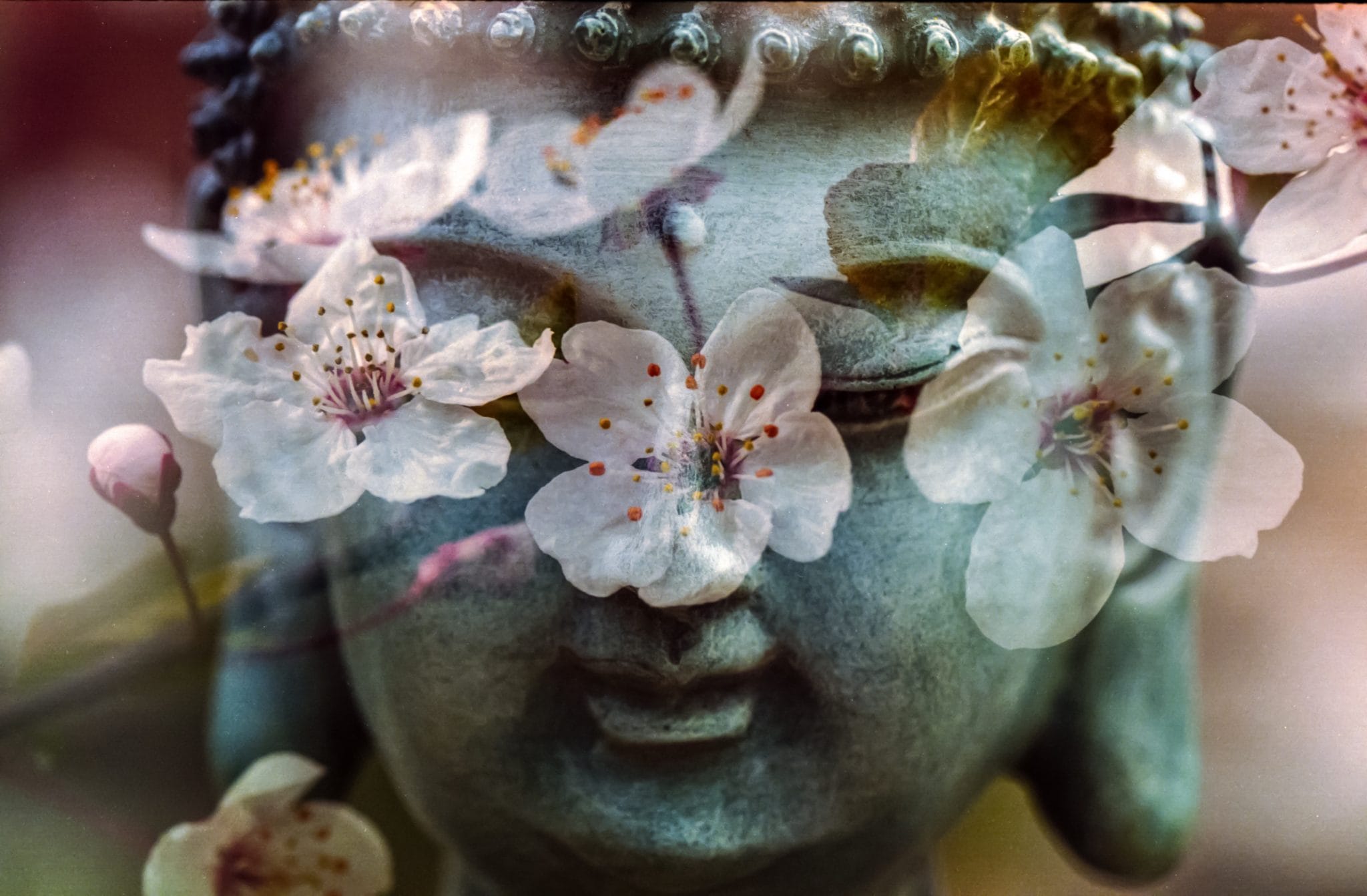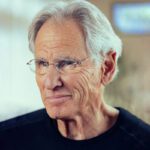Have you ever noticed that your awareness of pain is not in pain even when you are? I’m sure you have. It is a very common experience, especially in childhood, but one we usually don’t examine or talk about because it is so fleeting and the pain so much more compelling in the moment it comes upon us.
Have you ever noticed that your fear is not afraid even when you are terrified? Or that your awareness of depression is not depressed; that your awareness of your bad habits is not a slave to those habits; or perhaps even that your awareness of who you are is not who you think you are?
You can test out any of these propositions for yourself any time you like simply by investigating awareness—by becoming aware of awareness itself. It is easy, but we hardly ever think to do it because awareness, like the present moment itself, is virtually a hidden dimension in our lives, embedded everywhere and therefore not so noticeable anywhere.
Awareness is immanent, and infinitely available, but it is camouflaged, like a shy animal. It usually requires some degree of effort and stillness if not stealth even to catch a glimpse of it, no less get a sustained look, even though it may be entirely out in the open. You have to be alert, curious, motivated to see it. With awareness, you have to be willing to let the knowing of it come to you, to invite it in, silently and skillfully in the midst of whatever you are thinking or experiencing. After all, you are already seeing; you are already hearing. There is awareness in all of that, coming through all the sense doors, including your mind, right here, right now.
If you move into pure awareness in the midst of pain, even for the tiniest moment, your relationship with your pain is going to shift right in that very moment. It is impossible for it not to change because the gesture of holding it, even if not sustained for long, even for a second or two, already reveals its larger dimensionality. And that shift in your relationship with the experience gives you more degrees of freedom in your attitude and in your actions in a given situation, whatever it is…even if you don’t know what to do. The not knowing is its own kind of knowing, when the not knowing is itself embraced in awareness. Sounds strange, I know, but with ongoing practice it may start making very real sense to you, viscerally, at a gut level, way deeper than thought.
Awareness transforms emotional pain just as it transforms the pain that we attribute more to the domain of body sensations. When we are immersed in emotional pain, if we pay close attention, we will notice that there is always an overlay of thoughts and a plethora of different feelings about the pain we are in, so here too the entire constellation of what we think of as emotional pain can be welcomed in and held in awareness, crazy as that may sound at first blush. It is amazing how unused we are to doing such a thing, and how profoundly revealing and liberating it can be to engage our emotions and feelings in this way, even when they are raging or despairing—especially when they are raging or despairing.
None of us need to inflict pain on ourselves just so we can have an occasion to test out this unique property of awareness to be bigger than and of a different nature altogether from our pain. All we need to do is be alert to the arrival of pain when it shows up, whatever its form. Our alertness gives rise to awareness at the moment of contact with the initiating event, whether it be a sensation or a thought, a look or a glance, what someone says, or what happens in any moment. The application of wisdom happens right here, at the point of contact, in the moment of contact, whether you have just hit your thumb with a hammer or the world suddenly takes an unexpected turn and you are faced with one aspect or another of the full catastrophe, and all of a sudden grief and sorrow, anger and fear seem to have taken up what feels like permanent residency in your world.
It is at that moment, and in its aftermath, that we might bring awareness to the state in which we find ourselves, the state of the body and of the mind and heart. And then we take one more leap, bringing awareness to the awareness itself, noticing whether your awareness itself is in pain, or angry, or frightened, or sad.
It won’t be. It can’t be. But you have to check for yourself. There is no freedom in the thought of it. The thought is only useful in getting us to remember to look, to embrace that particular moment in awareness, and then to bring awareness to our awareness. That’s when we check. You could even say that is the checking, because the awareness knows instantly. It may only last a moment, but in that moment lies the experience of freedom. The door to wisdom and heartfulness, the natural qualities of our being when we experience freedom, opens right in that moment. There is nothing else to do. Awareness opens it and invites you to peek in, if just for a second, and see for yourself.
This is not to suggest that awareness is a cold and unfeeling strategy for turning away from the depths of our pain in moments of anguish and loss or in their lingering aftermath. Loss and anguish, bereavement and grief, anxiety and despair, as well as all the joy available to us, lie at the very core of our humanity and beckon us to meet them face-on when they arise, and know them and accept them as they are. It is precisely a turning toward and an embracing, rather than a turning away or a denying or suppressing of feeling that is most called for and that awareness embodies. Awareness may not diminish the enormity of our pain in all circumstances. It does provide a greater basket for tenderly holding and intimately knowing our suffering in any and all circumstances, and that, it turns out, is transformative and can make all the difference between endless imprisonment in pain and suffering and freedom from suffering, even though we have no immunity to the various forms of pain that, as human beings, we are invariably subject to.
Of course, opportunities large and small abound for bringing awareness to whatever is happening in our everyday lives, and so our whole life can become one seamless cultivation of mindfulness in this regard. Taking up the challenge of waking up to our lives and being transmuted by wakefulness itself is its own form of yoga, the yoga of everyday life, applicable in any and every moment: at work, in our relationships, in raising children if we are parents, in our relationships with our own parents, whether they are living or dead, in our relationship with our own thoughts about the past and the future, in our relationship to our own bodies. We can bring awareness to whatever is happening, to moments of conflict and to moments of harmony, and to moments so neutral we might not notice them at all. In each moment, you can test out for yourself whether in bringing awareness to that moment, the world does or does not open in response to your gesture of mindfulness, does or does not “offer itself,” in the poet Mary Oliver’s lovely phrase, “to your imagination,” whether or not it affords new and larger ways of seeing and being with what is, and thereby perhaps might liberate you from the dangers of partial seeing and the usually strong attachment you may have to any partial view simply because it is yours and you are therefore partial to it. Enthralled once again, even when in great pain, with the story of me that I am busy creating unwittingly, merely out of habit, I have an opportunity, countless opportunities, to see its unfolding and to cease and desist from feeding it, to issue a restraining order if necessary, to turn the key which has been sitting in the lock all along, to step out of jail, and therefore meet the world in new and more expansive and appropriate ways by embracing it fully rather than contracting, recoiling, or turning away. This willingness to embrace what is and then work with it takes great courage and presence of mind.
So, in any moment, whatever is happening, we can always check and see for ourselves. Does awareness worry? Does awareness get lost in anger or greed or pain? Or does awareness brought to any moment, even the tiniest moment, simply know, and in knowing, free us? Check it out. It is my experience that awareness gives us back to ourselves. It is the only force I know that can do so. It is the quintessence of intelligence, physical, emotional, and moral. It seems as if it needs to be conjured up but in actuality, it is here all the time, only to be discovered, recovered, embraced, settled into. This is where the refining comes in, in remembering. And then, in the letting go and the letting be, resting in, in the words of the great Japanese poet Ryokan, “just this, just this.” This is what is meant by the practice of mindfulness.
As we have seen, the challenge is twofold: first to bring awareness to our moments as best we can, in even little and fleeting ways. Second, to sustain our awareness and come to know it better and live inside its larger, never-diminished wholeness. When we do, we see thoughts liberate themselves, even in the midst of sorrow, as when we reach out and touch a soap bubble. Puff. It is gone. We see sorrow liberate itself, even as we act to soothe it in others and rest in the poignancy of what is.
In this freedom, we can meet anything and everything with greater openness. We can hold the challenges we face now with greater fortitude, patience, and clarity. We already live in a bigger reality, one we can draw from by embracing pain and sorrow, when they arise, with wise and loving presence, with awareness, with uncontrived acts of kindness and respect toward ourself and toward others that no longer get lost in the illusory divide between inner and outer.
Yet to do so, practically speaking, over the course of a lifetime, usually requires some kind of overarching framework that gives us a place to begin, recipes to try out, maps to follow, wise reminders to give ourselves, all the benefits to us of other people’s hard-won experience and knowledge. And this would include, when we need them, various ramps into the awareness and freedom that are, ironically, here for us in any and every moment, and yet, at times, are seemingly so distant and far from our ken.
Reprinted with permission from Coming to Our Senses, by Jon Kabat-Zinn. © 2005 by Jon Kabat-Zinn Ph.D. Published by Hyperion.

